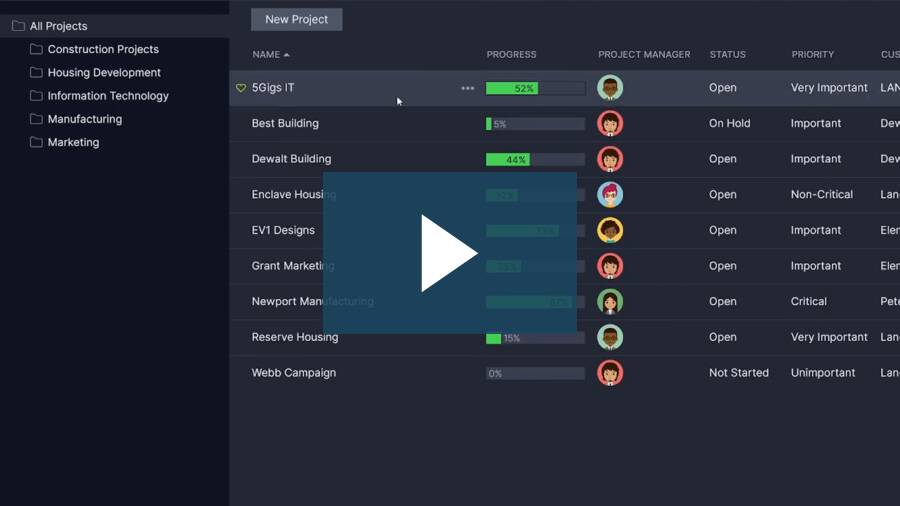Launching a new initiative or improving an existing process requires more than a list of tasks. Without a clear plan, teams risk confusion, missed deadlines and wasted resources. An implementation roadmap helps bring structure to the process by laying out the steps, assigning responsibilities and showing how the work will progress over time. It turns strategy into action and keeps everyone aligned on what needs to be done and when.
Creating an implementation roadmap gives stakeholders visibility into the entire process so they can anticipate challenges and track progress. This approach reduces miscommunication, keeps the project on schedule and ensures resources are used effectively. Whether you are rolling out a new system, building a product or managing organizational change, a well-made implementation roadmap helps your team stay focused and deliver results with confidence.
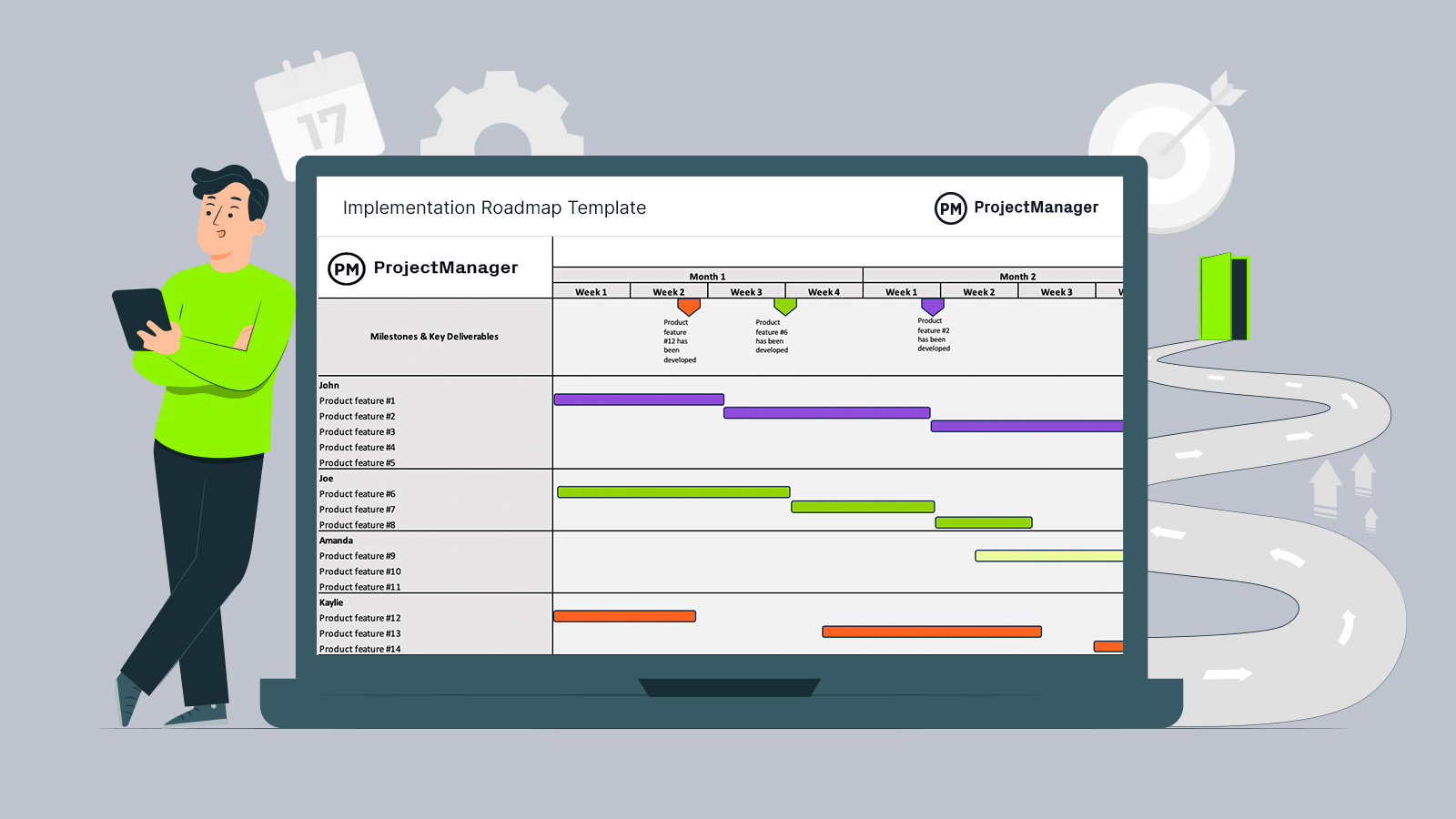
Get your free
Implementation Roadmap Template
Use this free Implementation Roadmap Template for Excel to manage your projects better.
What Is an Implementation Roadmap?
An implementation roadmap is a visual plan that outlines the steps needed to turn a strategy or initiative into reality. It maps out tasks, timelines and responsibilities in a way that makes the process easy to follow. By showing what needs to happen and when, an implementation roadmap helps keep projects organized and aligned with business goals.
This roadmap also acts as a communication tool for stakeholders. It provides a shared view of progress, highlights dependencies and clarifies priorities. With an implementation roadmap, teams can anticipate potential roadblocks, make timely adjustments and ensure every step contributes to the overall success of the initiative.
Project management software makes it easier to plan, execute and track an implementation roadmap by centralizing all activities in one place. Teams can create timelines, assign tasks and monitor progress in real time. This keeps everyone on the same page, reduces delays and improves accountability across departments and teams.
ProjectManager is an ideal solution for managing an implementation roadmap because it combines dynamic roadmaps with powerful project planning features. Roadmaps link dependencies to avoid cost overruns, filter for the critical path and can set a baseline to track variance in real time. Resource management tools and real-time dashboards give teams the added visibility they need to stay on track. By using ProjectManager, you can keep work organized, adapt quickly to changes and deliver successful outcomes every time. Get started with ProjectManager today for free.
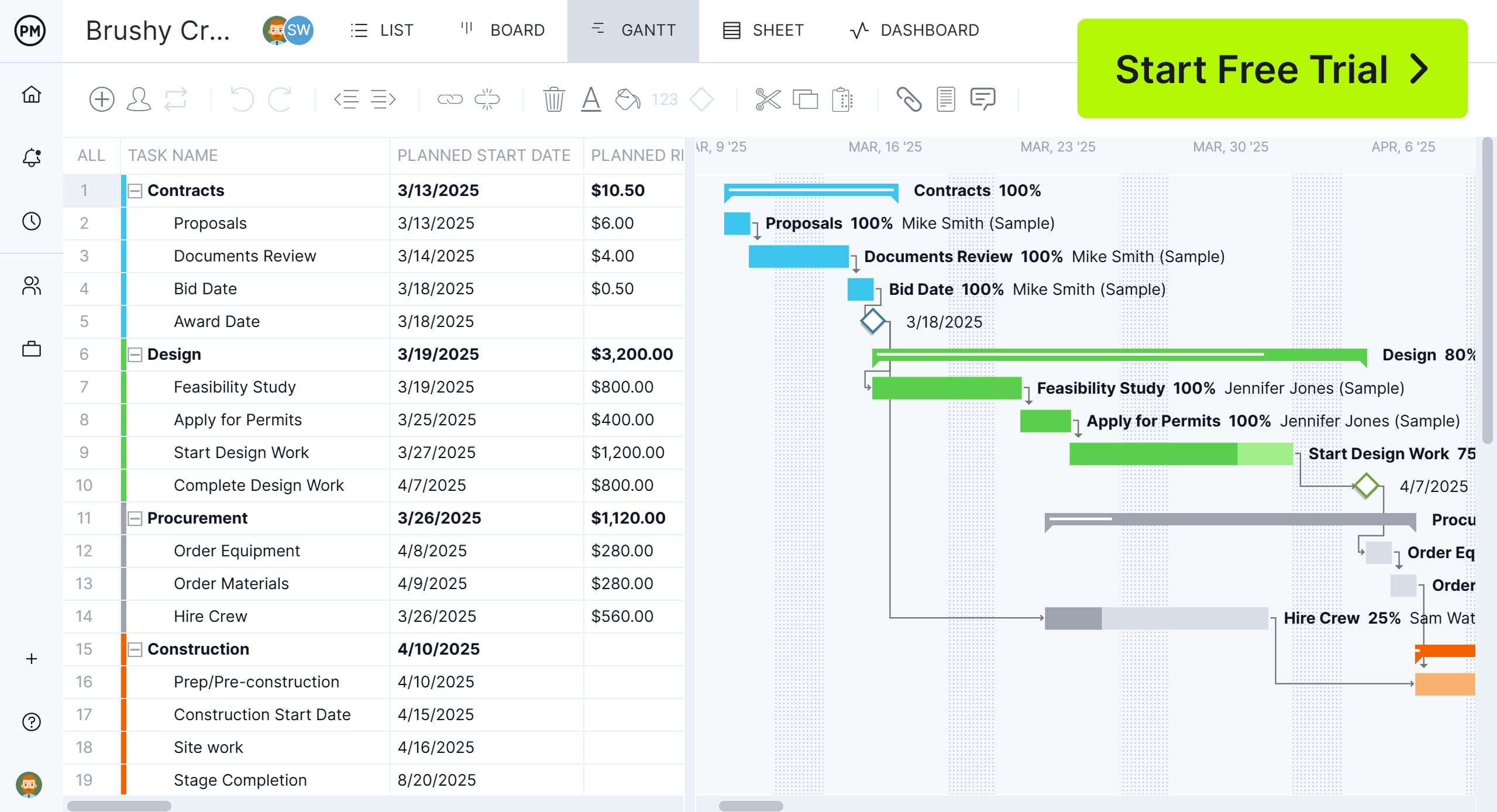
When to Use an Implementation Roadmap
An implementation roadmap is helpful whenever you need to coordinate multiple tasks, people and deadlines to achieve a shared goal. It’s especially valuable for projects or initiatives with dependencies, tight timelines and cross-team collaboration. Using an implementation roadmap helps teams stay organized, communicate clearly and keep work moving forward without confusion.
Project Management
In project management, an implementation roadmap provides a high-level view of how the project will unfold. It helps project managers schedule tasks, assign responsibilities and manage dependencies. This ensures teams understand priorities and milestones, making it easier to deliver on time and within budget.
- Construction Projects: An implementation roadmap is ideal for planning construction work, from pre-construction tasks to final inspections. It helps manage permitting, procurement, scheduling and subcontractor coordination so nothing falls through the cracks.
- IT Projects: Implementation roadmaps are widely used in IT for software rollouts, infrastructure upgrades and cybersecurity initiatives. They visualize each phase of implementation, making it easy to track testing, deployment and user adoption.
- Manufacturing Projects: In manufacturing, an implementation roadmap helps teams plan production line changes, equipment installations and process improvements. It keeps everyone aligned on timelines and minimizes costly downtime.
Business Strategic Initiatives
When companies take on large-scale initiatives like reorganizations, market expansions or policy changes, an implementation roadmap helps clarify priorities and communicate the plan. It shows stakeholders how the initiative will be executed step by step, reducing resistance to change by making progress visible.
Product Development
An implementation roadmap is also valuable in product development. It illustrates the journey from concept to launch, encompassing design, prototyping, testing, and release activities. This keeps product teams, marketing and stakeholders aligned on what needs to be done and when, reducing the risk of delays and missed opportunities.
Related: 5 Roadmap Templates
What Are the Key Elements of an Implementation Roadmap?
An implementation roadmap is most effective when it includes all the elements that teams need to stay organized and aligned. These elements provide a clear structure for planning, executing and monitoring work. They help teams visualize progress, anticipate challenges and make better decisions throughout the project lifecycle. Below are the key components that should be included in any implementation roadmap.
Project Timeline
The project timeline is the backbone of any implementation roadmap. It shows the start and end dates for the project as well as the sequence of tasks that need to be completed. A clear timeline helps teams understand when work will begin, how long each task will take and when the project should finish. This visibility makes it easier to coordinate activities, avoid scheduling conflicts and keep everyone accountable for deadlines. A well-structured timeline also allows project managers to identify critical paths, adjust schedules as needed and keep stakeholders informed about progress.
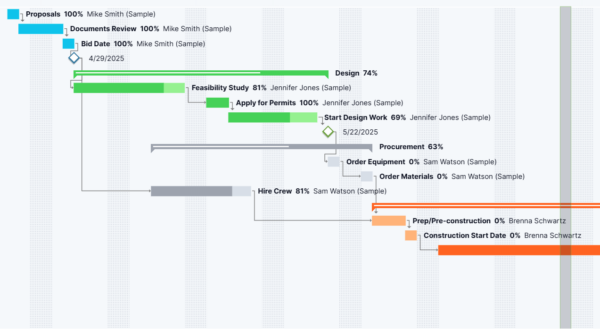
Related: 10 Must-Have Timeline Templates
Project Milestones
Milestones are key checkpoints that indicate major progress within an implementation roadmap. They represent significant events, such as the completion of a project phase, the approval of a design or the delivery of a critical component. Including milestones helps teams stay motivated by showing tangible progress toward the end goal. Milestones also help stakeholders track the project’s health and provide opportunities to review deliverables before moving to the next phase. When milestones are visible, teams can identify potential delays early and take corrective action before they impact the overall schedule.
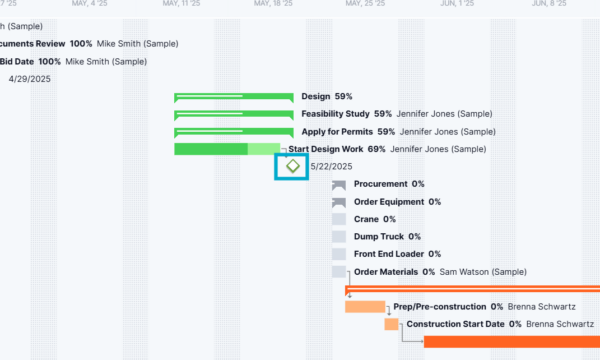
Task Dependencies
Task dependencies define the relationship between tasks within an implementation roadmap. Some activities must be completed before others can start, while some can run in parallel. Mapping these dependencies ensures that work is done in the right order and helps avoid costly delays. By understanding dependencies, project managers can plan for potential bottlenecks and adjust timelines when unexpected issues arise. This level of detail keeps teams from working at cross purposes and allows for smoother execution of the overall plan.
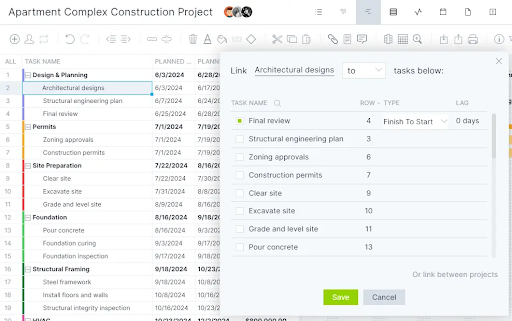
Project Phases
Breaking work into project phases adds structure to the implementation roadmap and makes complex initiatives easier to manage. Each phase represents a major stage of work, such as planning, design, execution and delivery. Phasing allows teams to focus on one part of the project at a time while still keeping sight of the big picture. It also creates natural review points where progress can be assessed, risks can be addressed and approvals can be secured before moving forward. This staged approach improves quality, reduces rework and makes it easier to control costs.
Roles and Responsibilities
Clearly defining roles and responsibilities is essential for any implementation roadmap. Each task should have an owner who is accountable for completing it. Assigning roles eliminates confusion, improves communication and ensures that work is distributed evenly across the team. When everyone knows what is expected of them, collaboration improves and projects move more efficiently. Including roles and responsibilities in the roadmap also helps with resource planning and ensures that no critical tasks are overlooked.
Success Metrics
Success metrics provide a way to measure whether the implementation roadmap is achieving its intended results. These metrics might include completion dates, budget targets, quality standards or customer satisfaction scores. Defining success criteria at the outset helps teams stay focused on outcomes rather than just activities. It also provides stakeholders with a way to evaluate project performance and make informed decisions. When metrics are tracked throughout the project, teams can make adjustments to stay on target and improve their chances of success.
Resource Allocation
Resources include the people, materials, equipment and budget required to complete the project. Effective resource allocation ensures that these assets are available when needed and used efficiently. The implementation roadmap should outline which resources are required for each task and when they will be used. Proper allocation prevents overallocation, reduces idle time and minimizes costs. It also allows project managers to identify potential shortages early and make adjustments before they disrupt progress.

Related: 7 Free Resource Management Templates
Risk Log
A risk log is a critical component of an implementation roadmap because it helps teams anticipate and address potential problems. It lists risks that could affect the project, along with their likelihood, impact and mitigation strategies. By maintaining a risk log, teams can prioritize issues and prepare contingency plans. This proactive approach reduces surprises, improves decision-making and helps keep the project on schedule. Regularly reviewing and updating the risk log ensures that teams stay alert to new risks as they arise.
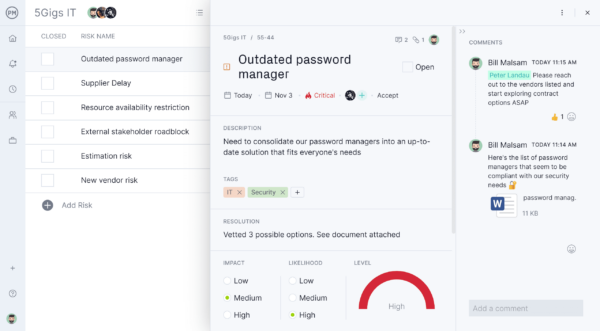
Change Log
Change is inevitable in most projects, and a change log helps manage it effectively. This document tracks all changes to the implementation roadmap, including adjustments to scope, schedule, budget or resources. Keeping a detailed change log ensures that decisions are transparent and that stakeholders understand why changes were made. It also helps prevent scope creep and provides a historical record that can be used for future planning. A well-maintained change log keeps projects under control and reduces the risk of miscommunication.
Related: Free Change Log Template
Implementation Roadmap Template
Want to try making one yourself? Download this free implementation roadmap template. It offers a structured format for teams planning out projects from start to finish. This template organizes the process into a clear timeline divided by months and weeks, allowing project managers to arrange phases and milestones in a way that’s easy to follow.
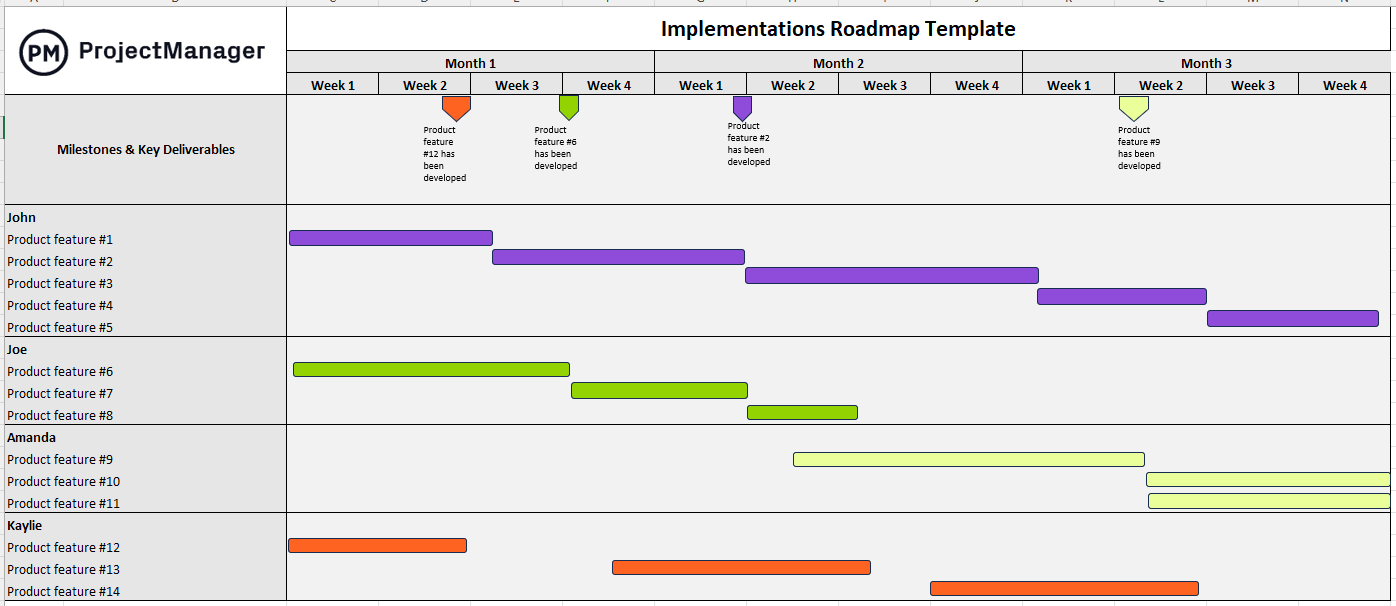
All major deliverables and activities can be mapped out in the schedule, making team responsibilities and deadlines clear at a glance. Adopting a consistent roadmap structure helps teams maintain focus, communicate goals and monitor progress through each stage of implementation.
Implementation Roadmap Example
This implementation roadmap example lays out the major stages, milestones and key deliverables needed to successfully launch a product over a three-month timeline. The template is structured by weeks and months, tracking progress for different team members on distinct objectives like user authentication, dashboard design and real-time notifications. Breaking down the roadmap by specific tasks helps all contributors know what’s due each week and which project elements are interconnected, making it easier to visualize dependencies and maintain momentum throughout development.
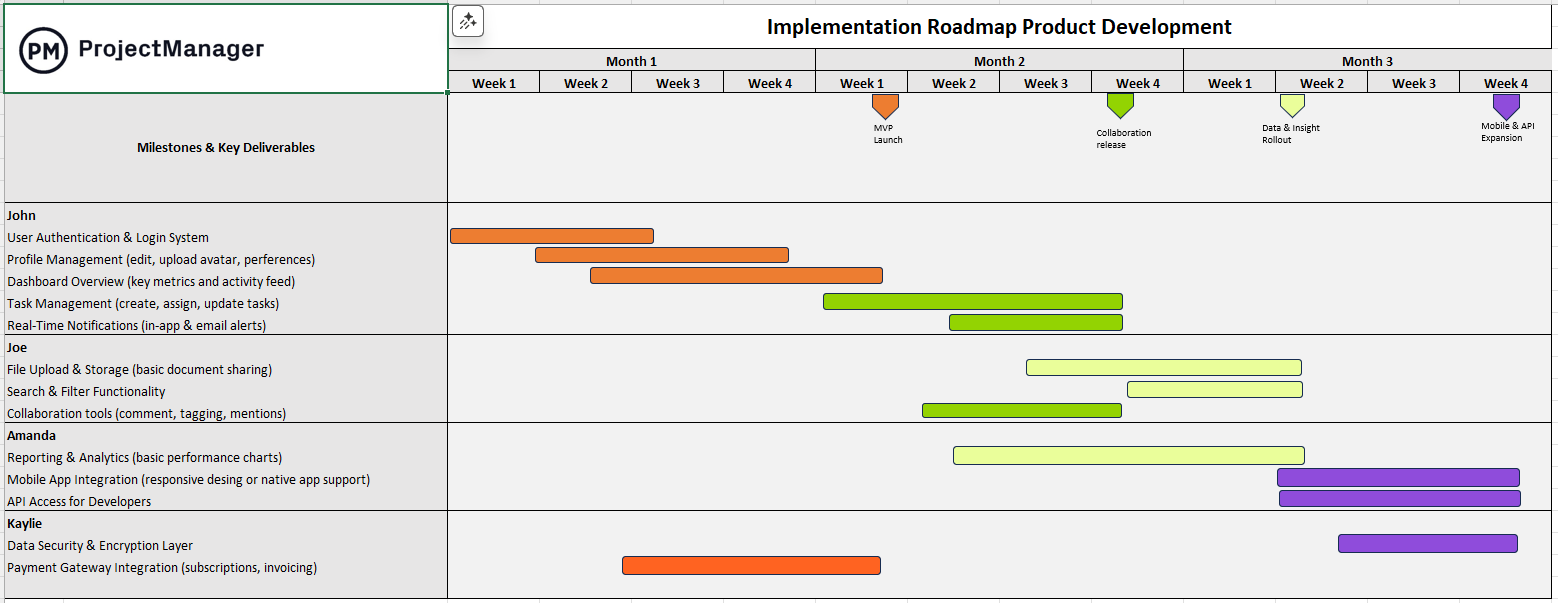
Responsibilities are distributed among team members, with activities detailed for each role so nothing is overlooked during execution. Features such as file upload, analytics reporting, data security and payment integration are line-itemed, making the roadmap a clear guide for building, testing and releasing new capabilities. The format gives everyone transparency on goals and schedules, supporting collaboration between developers, analysts and managers and keeping focus on collective success.
How to Make an Implementation Roadmap With ProjectManager
Creating an implementation roadmap with ProjectManager begins with clearly defining your project goals and breaking them down into actionable tasks. The platform allows you to map out the project from start to finish, visually laying out timelines, milestones and deliverables in a structured plan. By using our intuitive interface, you can sequence tasks logically, identify dependencies and establish realistic deadlines. This initial roadmap acts as a blueprint that aligns the team, sets expectations and ensures that every aspect of the project is accounted for before execution begins.
Do you have more than one project to execute? Watch the brief video below to learn more about how ProjectManager can support project portfolio management.
Optimize Resource Management to Prevent Bottlenecks
Once the roadmap is in place, our software helps optimize resource management. You can assign tasks to team members, track workload and balance responsibilities to prevent bottlenecks. The color-coded workload chart and team page provide a real-time view of who is working on what, allowing project managers to allocate resources efficiently.
By monitoring capacity and adjusting assignments directly within the platform, teams can maintain productivity and avoid over- or under-utilizing personnel. This centralized approach ensures resources are used effectively, supporting the successful completion of each milestone.
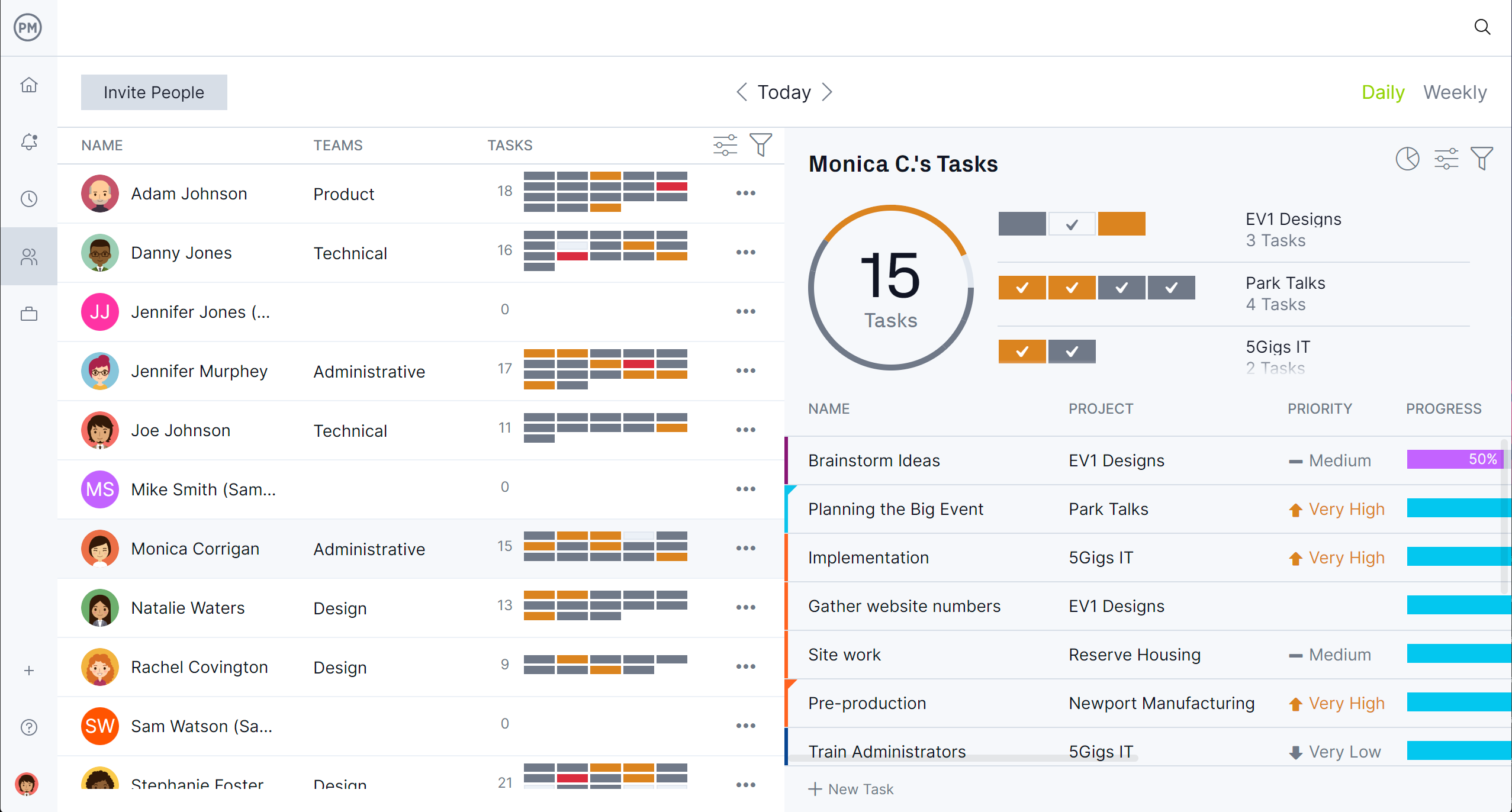
Stay on Schedule With Tracking and Progress Monitoring
ProjectManager also excels at tracking progress throughout the implementation roadmap. Using features like Gantt charts, dashboards and real-time reporting, project managers can monitor task completion, detect delays and measure performance against planned objectives.
Automated notifications and visual indicators help keep the team on schedule, while the ability to generate reports makes it easy to communicate progress to stakeholders. Project managers can continuously track the project to make data-driven decisions, quickly resolve issues and ensure the roadmap stays aligned with the overall project goals.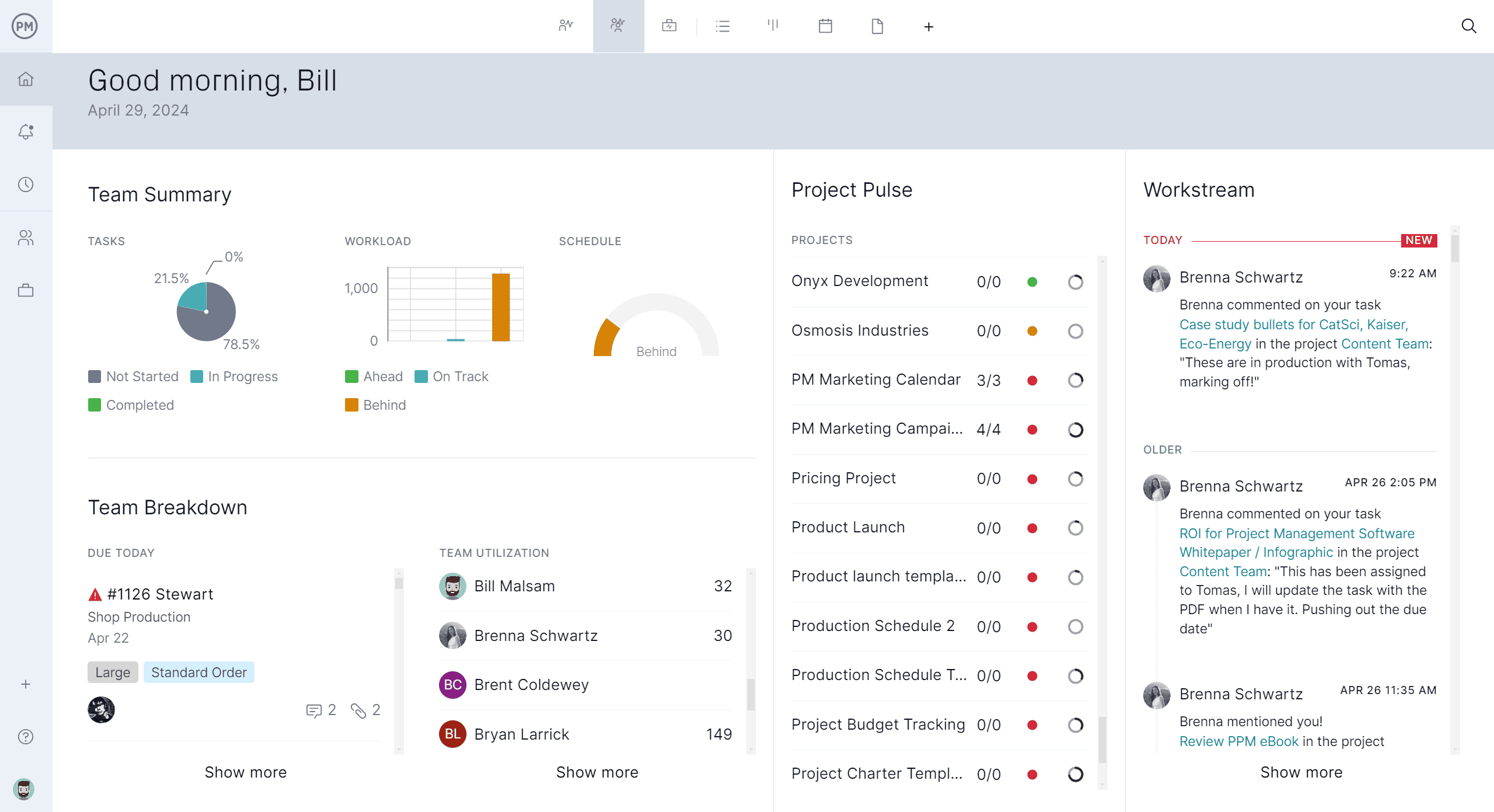
Related Content
For those readers who care to learn more about roadmaps, get other free templates and learn what an implementation plan is, check out the links below.
- 5 Roadmap Templates
- What Is an Implementation Plan? (Template & Example Included)
- What Is a Post-Implementation Review in Project Management
- Process Implementation: A Quick Guide
- How to Create a Flawless Implementation Schedule for a Project
- How to Create a Strategic Roadmap for Your Organization
ProjectManager is online project and portfolio management software that connects teams, whether they’re in the office or out in the field. They can share files, comment at the task level and stay updated with email and in-app notifications. Get started with ProjectManager today for free.

